

Josh Nevett
CarExpert's top five large SUV reviews of 2025
1 Day Ago
Want a mid-sized SUV that's actually powerful and fun-to-drive? The Mazda CX-5 GT SP fits the bill, at least when you opt for the turbo.

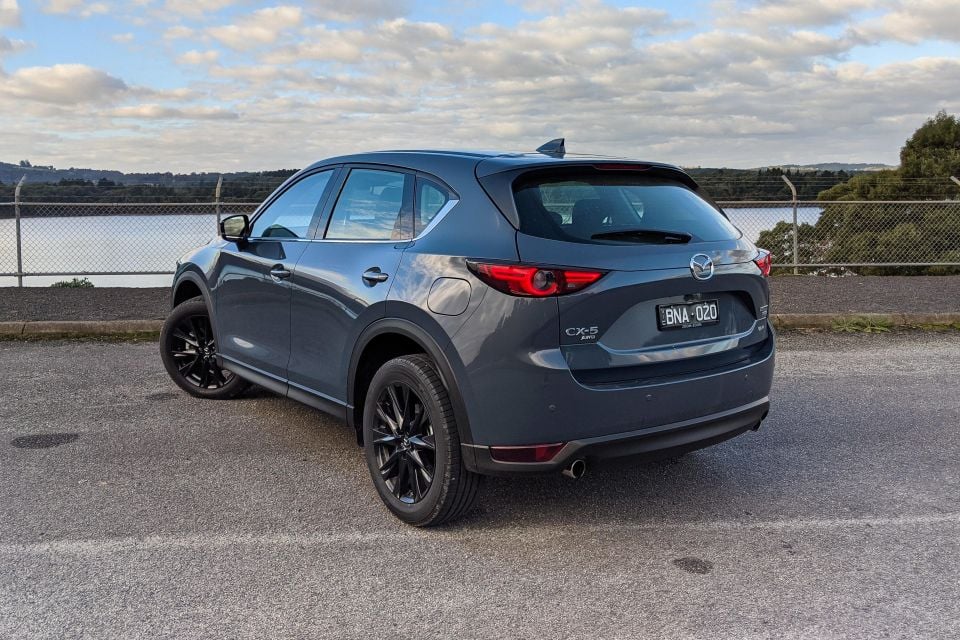

News Editor
New from
$50,190
excl. on-roads

News Editor
New from
$50,190
excl. on-roads


News Editor
New from
$50,190
excl. on-roads

News Editor
New from
$50,190
excl. on-roads
Quickly see how this car stacks up against its competition. Select any benchmark to see more details.
Where expert car reviews meet expert car buying – CarExpert gives you trusted advice, personalised service and real savings on your next new car.
In case you hadn’t heard, Mazda is going a little premium.
It has released decadent LE versions of its CX-8 and CX-9 crossovers, while it’s readying a new ‘Large Architecture’ for future vehicles that’ll offer inline six-cylinder petrol and diesel engines.
These moves shouldn’t come as a surprise, particularly when you consider the turbocharged Mazda CX-5.

While our tester isn’t the ritzy Akera with its Nappa leather and real wood trim, it packs the same optional turbocharged 2.5-litre four-cylinder engine. And that engine is a breath of fresh air in a rather uninspiring segment.
Other than the Ford Escape and Volkswagen Tiguan, there’s nothing with this level of performance in the mainstream mid-sized SUV segment in Australia. Most manufacturers figure you’ll be happy with about 120-130kW and if you want any more grunt, some of them will sell you a turbo-diesel.
For most buyers, that’s enough. But we know there are plenty of you that want something with a little more punch, and yet still want that SUV body style.
At the upper echelons of the CX-5 range, there’s a lot of variety.
The mid-range GT and range-topping Akera both offer the choice of naturally-aspirated and turbocharged 2.5-litre four-cylinder engines, as well as a 2.2-litre turbo-diesel.
Introduced for 2021, the Mazda CX-5 GT SP slots neatly between those trim levels and offers a choice of the two petrol engines.
In turbocharged guise as tested here, it retails for $49,990 before on-road costs. That’s only $500 more than a GT with the same powertrain, and just under $2000 less than a similarly-specified Akera.
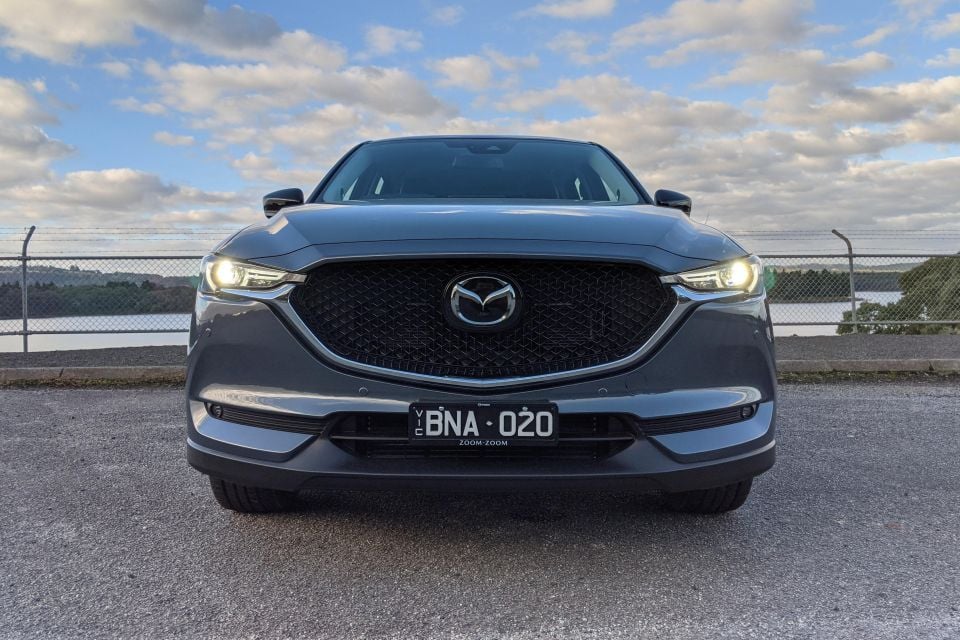
No-cost colour choices include Snowflake White Pearl, White Mica, Titanium Flash Mica, Eternal Blue Mica, Deep Crystal Blue Mica, Jet Black Mica, and Sonic Silver Metallic. You’ll pay $495 extra for Machine Grey Metallic, Soul Red Metallic, and our tester’s Polymetal Grey Metallic.
You’ll pay $50,790 before on-roads for a Volkswagen Tiguan 162TSI Elegance, though the sportier-looking R-Line costs an extra $3000.
The Ford Escape ST-Line looks like a steal at $40,990 list. To bring it as close as possible to the GT SP in equipment, however, necessitates adding the $2800 ST-Line option pack, bringing it to a still sharply-priced $43,790.

Buy your new car without the stress. It's fast, simple and completely free.

Great service from Travis and team, second time I have used this business would not hesitate to recommend them to anyone
Craig C.
Purchased a Ford Ranger in Sunshine Coast, QLD
CarExpert helped Craig save thousands on his Ford Ranger, now let us save you on your next new car.
Find a dealWe hope you like black, because that’s what the GT SP adds over the GT. There are black 19-inch alloy wheels, black side mirror caps, and black interior trim, including seats upholstered in ‘Maztek’ leatherette and ‘Grand Luxe’ synthetic suede.
There’s a tiny flash of colour inside in the form of red contrast stitching, while there’s still some chrome outside to stop it from looking too foreboding.
Otherwise, this is essentially a CX-5 GT. 2021 CX-5 models from GT grade and up gain a new 10.25-inch centre display running the latest Mazda Connect infotainment system featuring satellite navigation, DAB+ digital radio, as well as wired Android Auto and Apple CarPlay.
There’s also a power tailgate, single-pane sunroof, 10-speaker Bose sound system, and heated front seats with 10-way power adjustment and memory for the driver and six-way power adjustment for the passenger.
The GT’s Adaptive Front Lighting System is also included in the GT SP, which means the beam of the headlights moves with the steering wheel.

That’s in addition to the following features found lower in the CX-5 range:
While it’s missing power-adjustable front seats, the Ford Escape ST-Line still stacks up well against the Mazda. Its option package adds a head-up display, heated front seats, Matrix LED headlights and a power tailgate to a feature list that already includes niceties like remote start, wireless phone charging, and a 12.3-inch digital instrument cluster.
If you’re still hankering for power front seats and keyless entry, the more luxury-focused Vignale AWD costs $49,590 before on-roads and bests the Mazda with a panoramic sunroof and semi-autonomous parking assist.
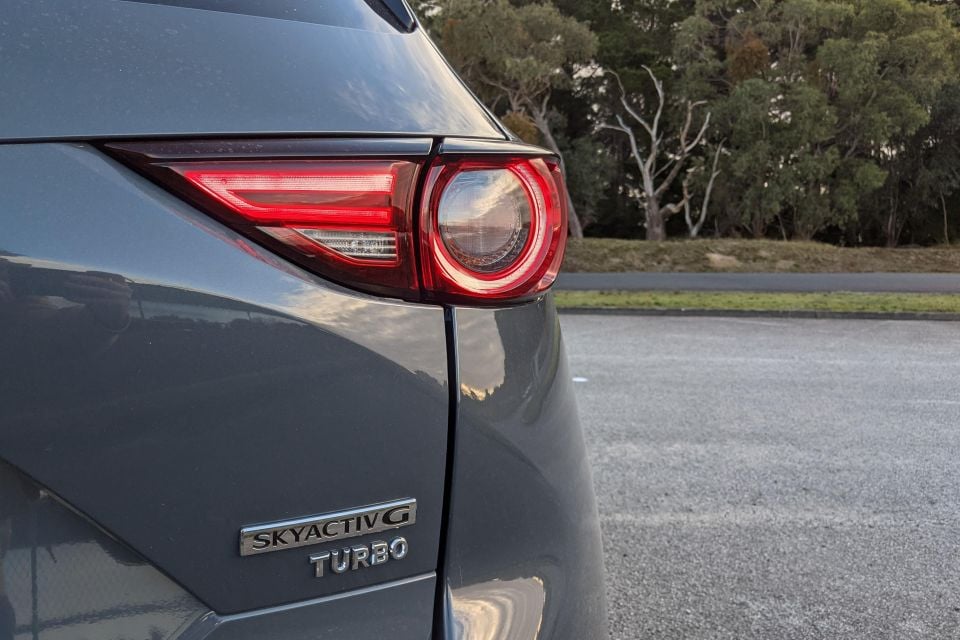
Looking at the Tiguan 162TSI Elegance, you’ll also find a standard digital instrument cluster – Volkswagen’s impressive 10.25-inch Digital Cockpit Pro – as well as tri-zone climate, heated and power adjustable front seats, Matrix LED headlights, colour-adjustable ambient lighting, a larger 9.2-inch infotainment system, and adaptive suspension.
That’s an impressive array of kit, though you’ll need to step up to the R-Line for a power tailgate and sporty interior and exterior touches.
The CX-5 GT SP still offers plenty of kit for its price, but its rivals from Ford and Volkswagen offer more modern technology for an almost identical price.
Despite this, the extra $2000 or so for an Akera doesn’t seem like a bad deal, considering you’ll get ventilated front seats, a surround-view camera, adaptive LED headlights with matrix-like functionality, and Nappa leather upholstery, among other features.
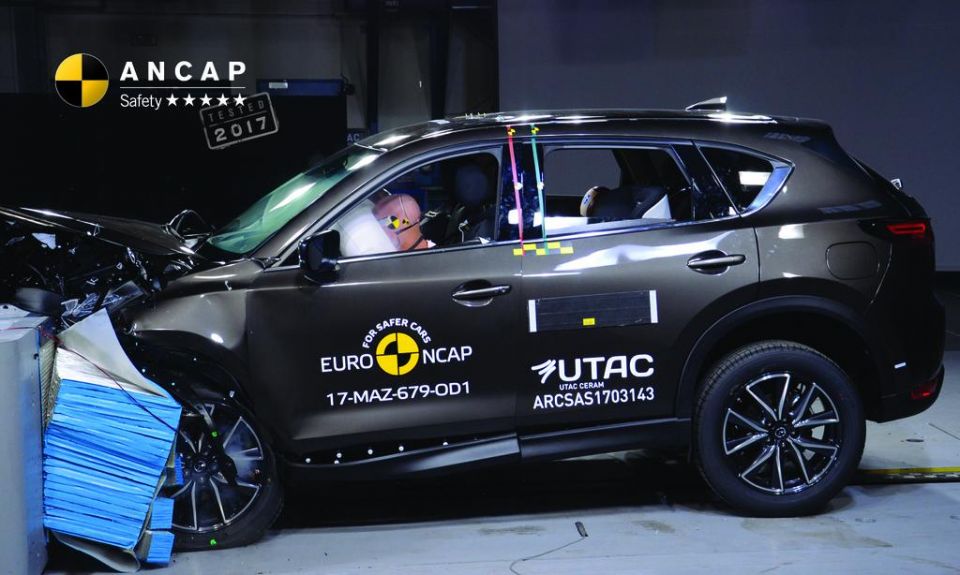
The Mazda CX-5 range has a five-star ANCAP safety rating, based on testing conducted in 2017.
It received an adult occupant protection score of 95 per cent, a child occupant protection score of 80 per cent, a pedestrian protection score of 78 per cent, and a safety assist score of 59 per cent.
All models come standard with the following safety equipment:
Once you get up to the GT SP grade, the list of safety equipment also grows to include front parking sensors and traffic sign recognition.
The Ford and Volkswagen offer a similar suite of safety features, but both miss out on traffic sign recognition.
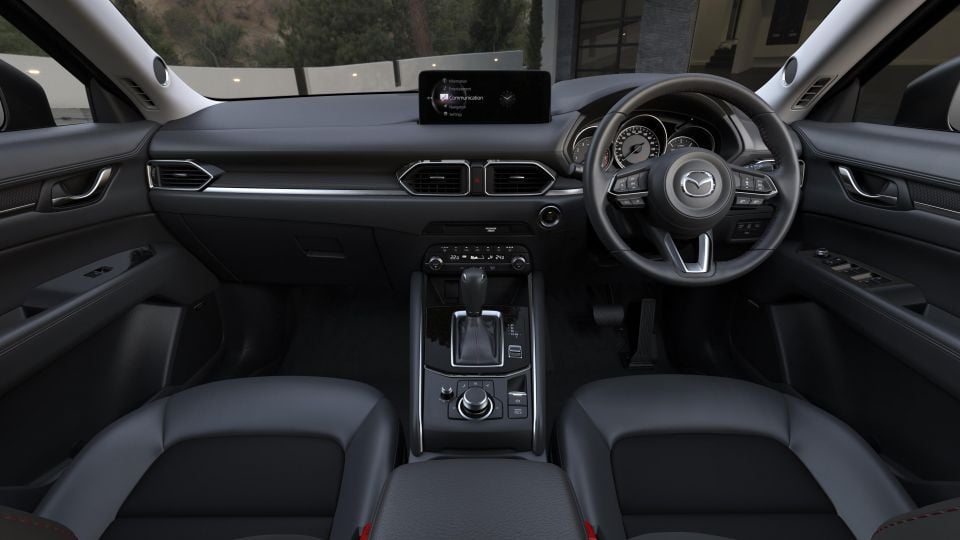
The CX-5’s interior is refreshingly simple in layout and finished with attractive, tactile materials.
There are lovely knurled dials, elegant stitching details on the dash, doors and console, and soft-touch plastics on the top half of the dash and doors.
It’s almost European in execution, especially the rotary dial for the infotainment system – shades of BMW – and the smaller dial next to it for volume, reminiscent of an Audi. Subtle metal-look highlights, including around the air vents, shifter, and switchgear, help to break up the black-on-black trim.
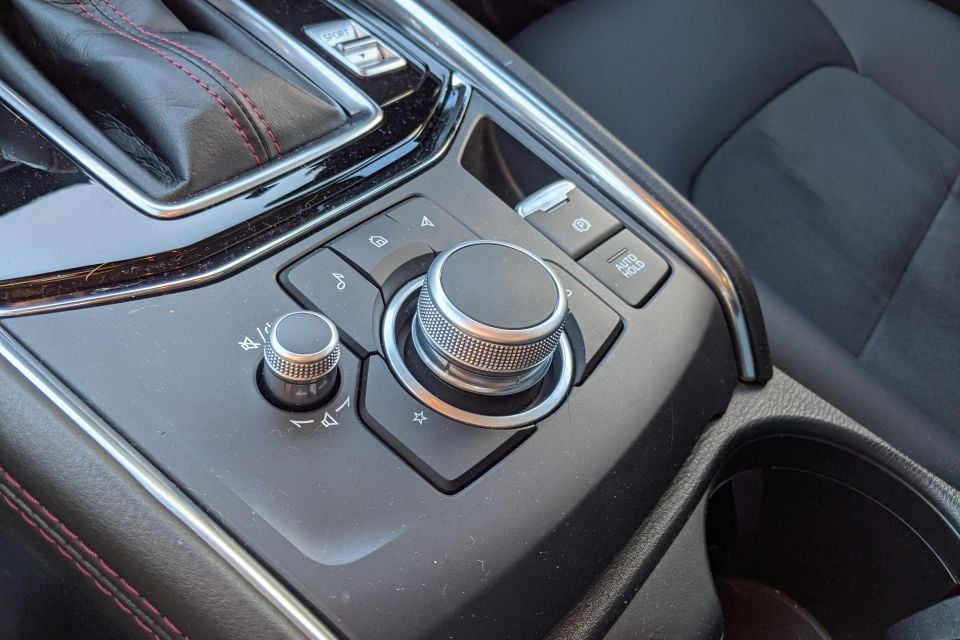
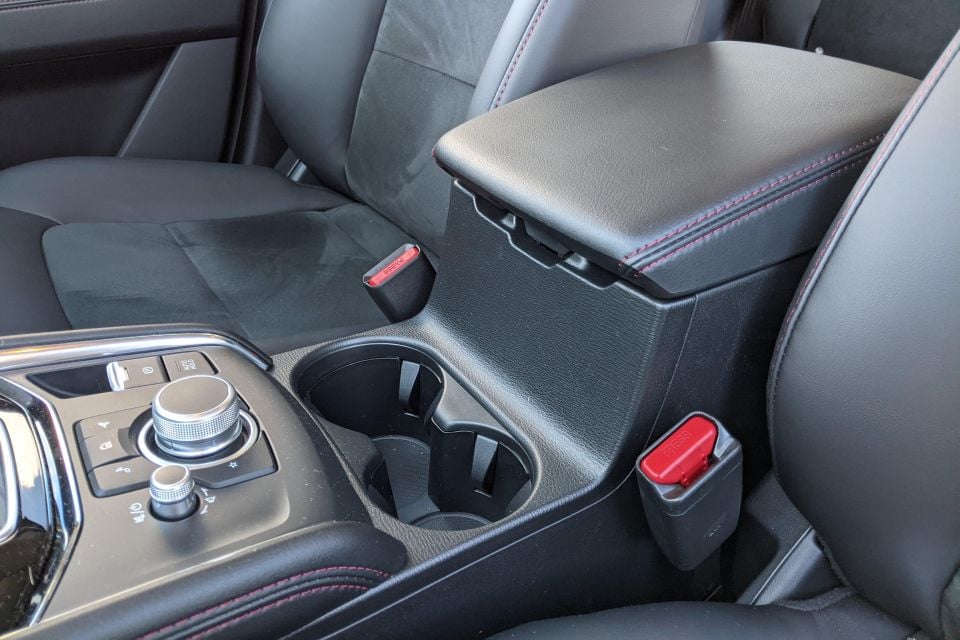

The sides of the centre console are finished in padded leatherette, which is a thoughtful touch. Red stitching details can also be found here. If you want a breezier interior, the GT offers white upholstery.
The new 10.25-inch Mazda Connect system is a big improvement over the 8.0-inch MZD Connect system found in lesser CX-5 models.
You still use a nicely-weighted rotary dial to control it, but the user interface looks much more modern and it’s quicker to react to inputs.
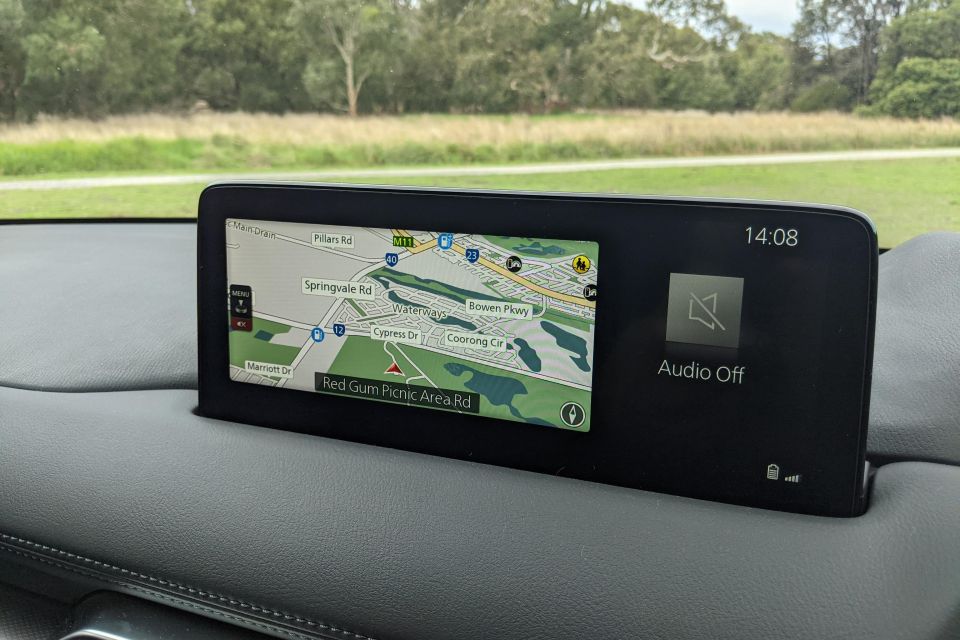
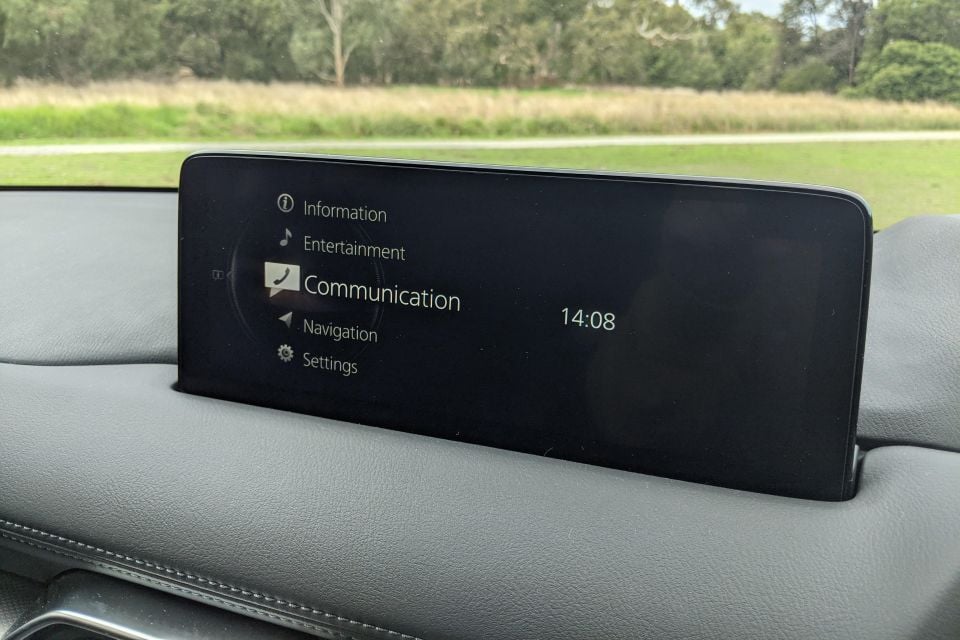
The only downside is the lack of touchscreen functionality which means using smartphone mirroring can be a bit clunky, for example if you’re using Google Maps.
The voice recognition system needs some finessing. It’ll allow you to dictate an address for the satellite navigation system, but on one occasion it took four attempts to comprehend a simple address spoken with almost patronising enunciation.
The steering wheel feels nice in your hand, though putting the Info button and the skip track buttons on the same basic button is a strange misstep that had us accidentally skip tracks once or twice.
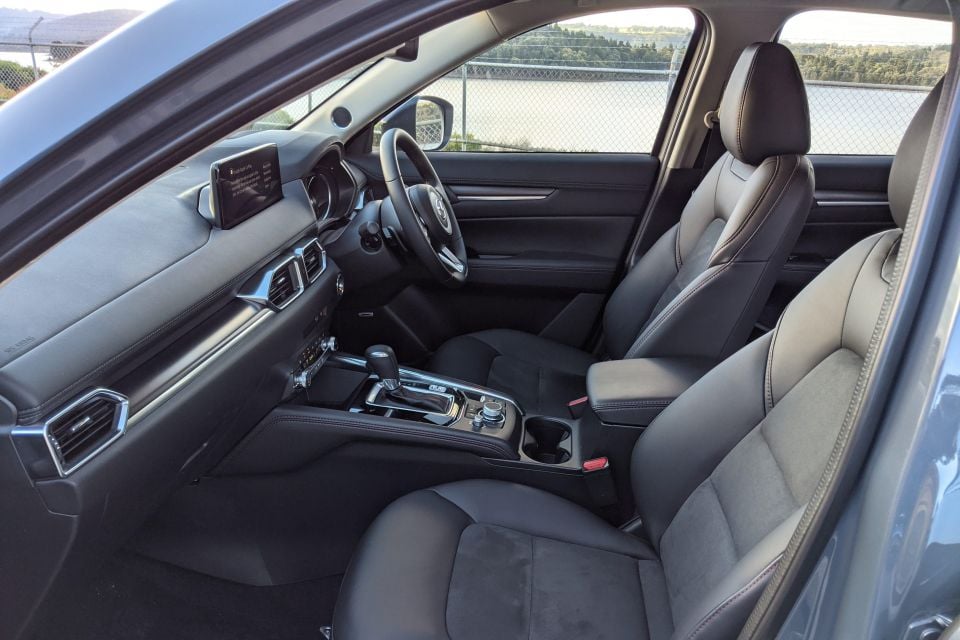
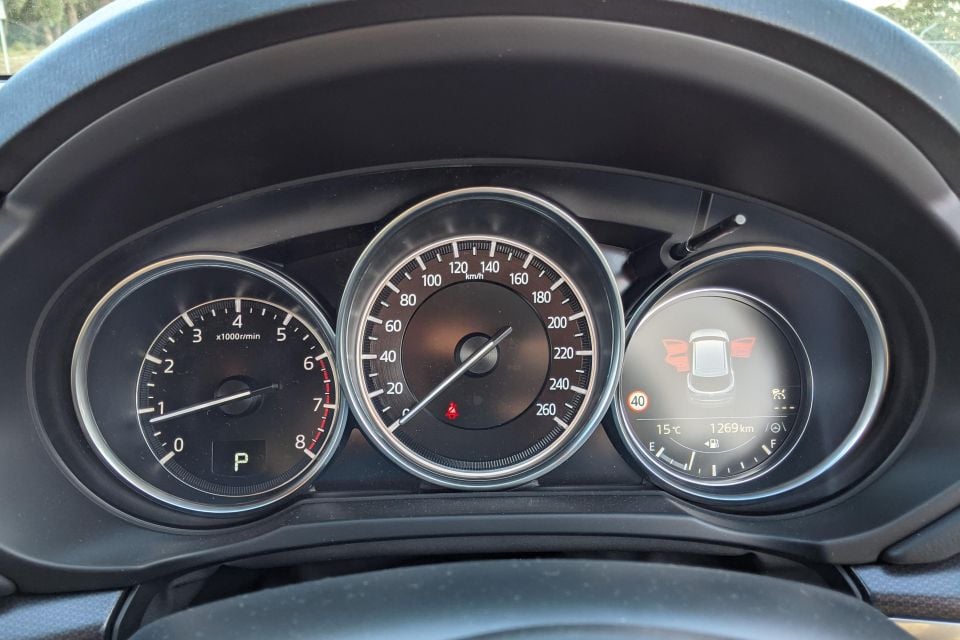
The seats are comfortable, though they could stand to be a touch wider. The instrument cluster features three dials: two analogue, one a digital display.
The presentation is neat and the dials are legible, though if you fancy something more futuristic you may prefer the full-digital clusters of the Tiguan and Escape.
While the CX-5 isn’t quite as commodious as a Toyota RAV4 in the back, there’s still ample headroom and legroom. The front seatbacks are soft, and there are map pockets and air vents for rear passengers.
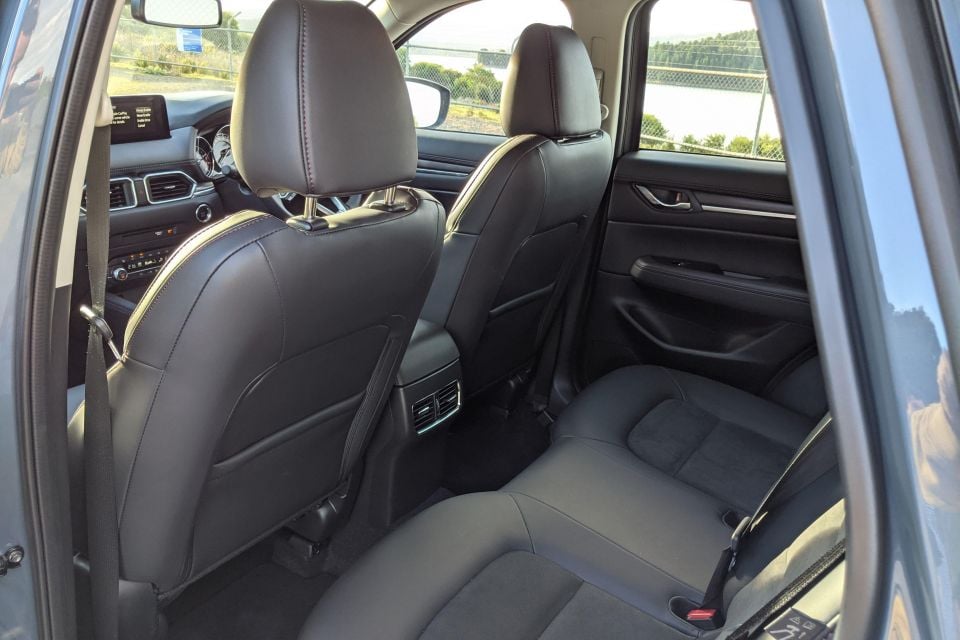
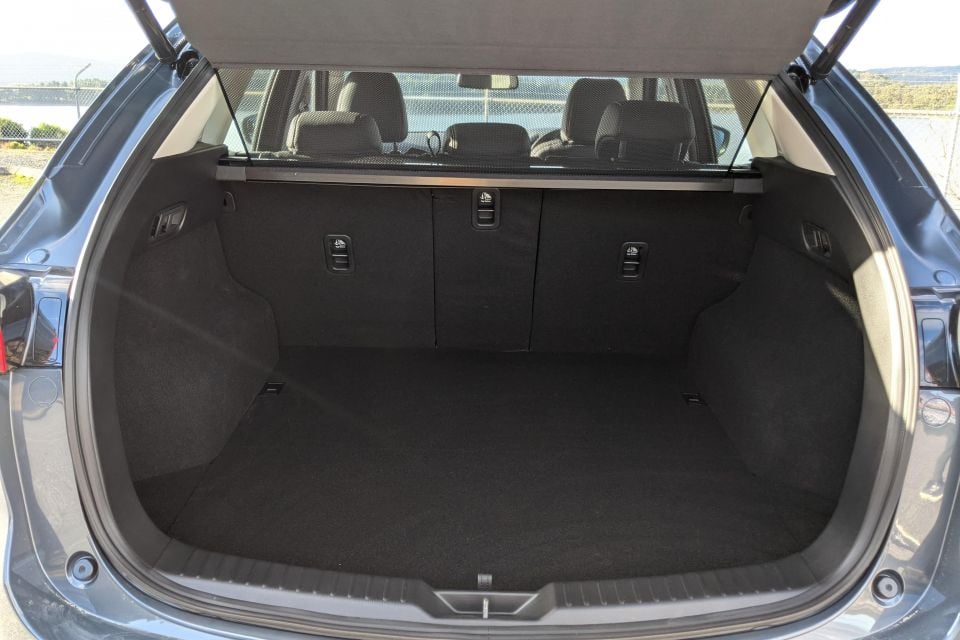
Looking for the USB outlets? You’ll find them in the fold-down centre armrest, not at the base of the centre console as in some rivals. That’s only a bother if you’re carrying three passengers in the rear.
Those rear seats split and fold 40:20:40, which is handy when carrying long items but multiple passengers. If you’re carrying babies instead of bean poles, there are three top-tether anchor points for child seats plus Isofix anchor points for the two outboard seats.
Like the back seat, the boot is a touch smaller than some rivals. Cargo space measures 442L up to the cargo cover, expanding to 1342L (measured to the roof) with the second row folded flat.
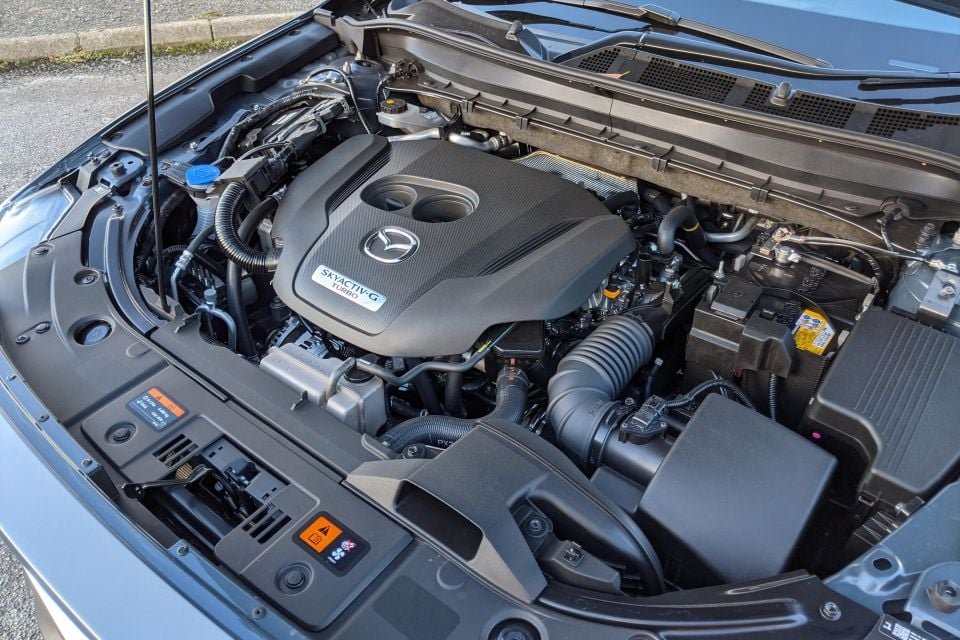
Our tester was equipped with the optional turbocharged 2.5-litre four-cylinder petrol engine, producing 170kW of power and 420Nm of torque. It’s mated to a six-speed torque-converter automatic transmission and all-wheel drive.
Those outputs are up 30kW and 148Nm on the non-turbocharged version. It’s the same engine as you’ll find in the Mazda 6 and CX-9 and, sadly not in Australia, the CX-30 and Mazda 3.
As mentioned, there’s little in the mainstream mid-sized SUV segment that offers this level of performance. The 180kW/350Nm turbocharged 2.0-litre Kia Sportage isn’t sold here, while the 188kW/353Nm turbo 2.0-litre Holden Equinox has sadly vanished.
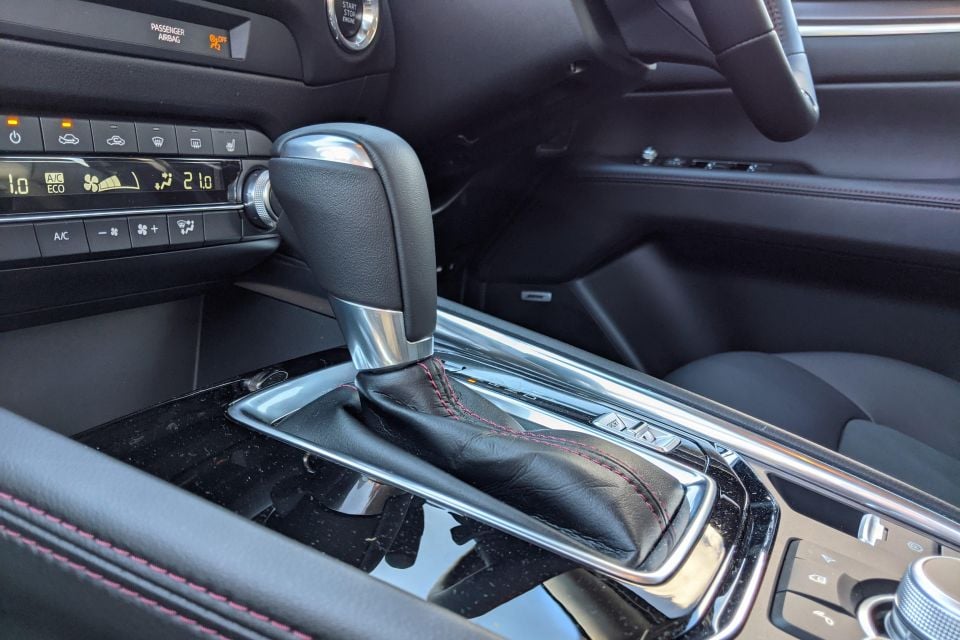
Where expert car reviews meet expert car buying – CarExpert gives you trusted advice, personalised service and real savings on your next new car.
That leaves the Volkswagen Tiguan 162TSI with its 162kW/350Nm turbocharged 2.0-litre four-cylinder engine and the Ford Escape. The Blue Oval contender outpunches the Mazda with 183kW of power from its turbocharged 2.0-litre four. The Mazda, however, puts out more torque than the Escape’s 387Nm.
The Toyota RAV4 Hybrid is also pretty sprightly, putting out 160kW in front-wheel drive guise and 163kW in all-wheel drive models. Toyota doesn’t specify a system torque figure, however.
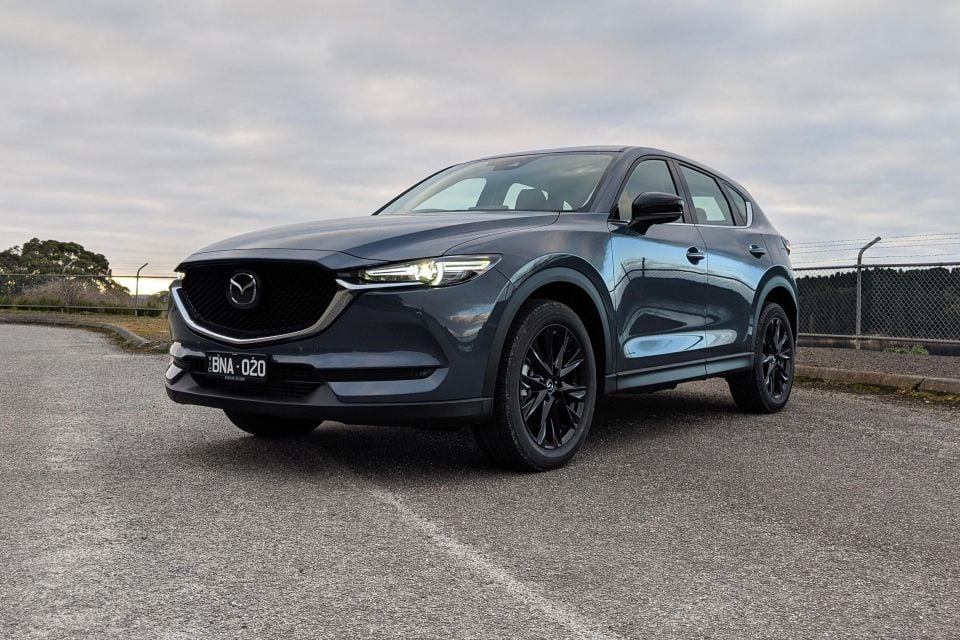
The CX-5 remains arguably one of the dynamic benchmark in the mid-sized SUV segment, and it shines brightest with the turbo-petrol engine.
This really is a crackerjack engine. You surf a wave of prodigious low-end torque, with the CX-5 always having plenty of grunt off the line. Unlike some rival four-cylinder engines, the Mazda sounds good, with a sporty engine note.
It’s a good thing the CX-5 is fitted with all-wheel drive as 420Nm would be a lot for a front-driver, and under heavy acceleration you can feel the front wheels getting a glut of torque before the system intervenes and sends some to the rear. Rather than feeling clumsy and reactive, however, it gives the CX-5 a fun, eager character.

That makes this mid-sized SUV fun to drive on a twisty road, something that can’t be said for a vast number of its rivals. Steering is precise, well-weighted and communicative, while the all-wheel drive and 225/55 Toyo Proxes tyres afford the CX-5 plenty of grip.
It stays flat in corners, avoiding the sometimes top-heavy feel some rivals have. This might just be the least mid-sized SUV-like vehicle to drive in the mid-sized SUV class.
The six-speed automatic might be down a gear or two on some rivals but it shifts smoothly and quickly, even in spirited driving. There’s really little point in flicking it to Sport mode or using the paddle shifters.
Ah, but how does it fare in your daily commute? Quite well. The ride is a touch firm but it’s never uncomfortable, and bumps are dispatched with a well-damped poise even riding on 19-inch wheels.
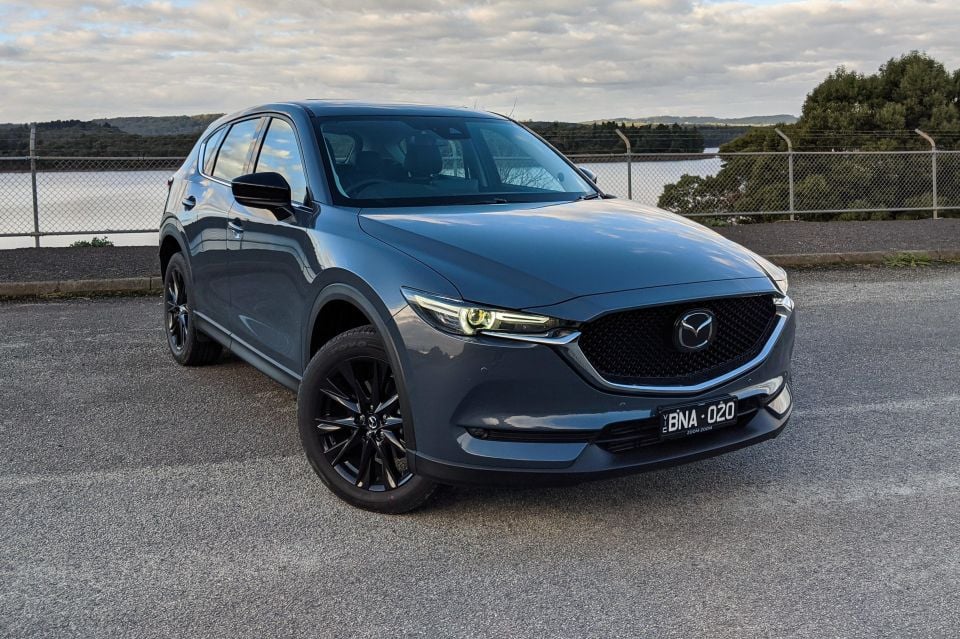
While the CX-5 has a sporty engine sound, the noise is never intrusive. For one, you never have to rev it hard to get the most out of it. In daily driving, the CX-5’s cabin is hushed. Even on the highway, little road noise infiltrates the cabin, with even wind noise around the exterior mirrors virtually imperceptible.
Out on a country road, the LED headlights provide excellent illumination and the Adaptive Front Lighting System is a splendid companion on a winding mountain road.
The automatic stop/start system isn’t as intrusive as Volkswagen’s, and you have to depress the brake pedal quite firmly to activate it. Likewise, the lane-keep assist isn’t constantly making its presence felt, though that also means its overall performance is average. You can switch it off via a button on the dash, though it defaults to on.
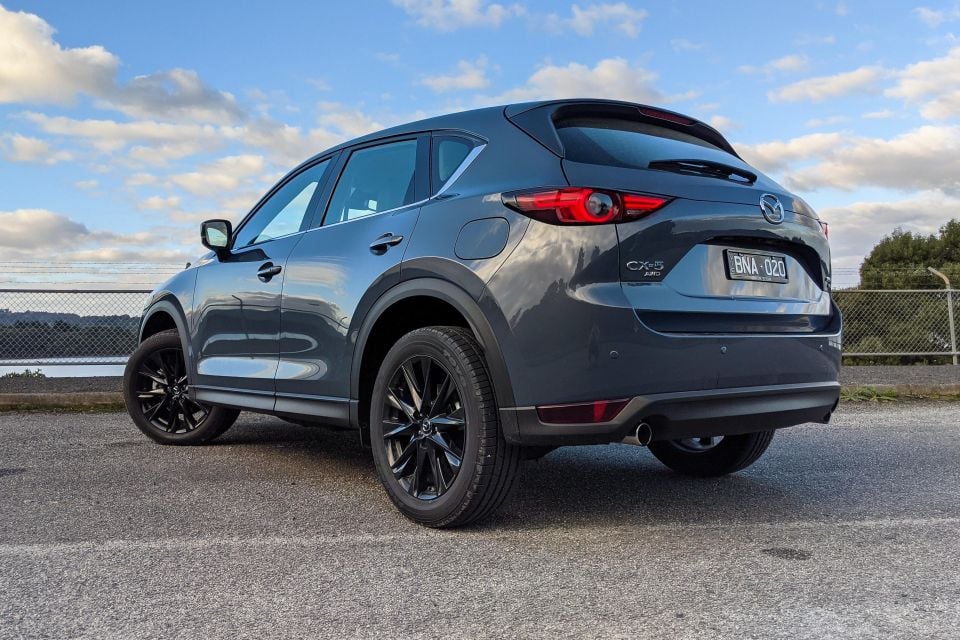
In a week of predominantly urban commuting, including plenty of horrendous Melbourne traffic, we averaged 10.3L/100km. Mazda’s claimed combined figure is 8.2L/100km.
Servicing is required every 12 months or 10,000km, whichever comes first. That’s a shorter interval than the 15,000km one offered by most rivals.
In addition to a five-year, unlimited-kilometre warranty, Mazda offers five years of capped-price servicing.
At the time of writing, these prices were $349, $379, $349, $379, and $349 for the first five visits in that order. These prices don’t include items like cabin air filters and brake fluid, which are replaced every two years or 40,000km at an additional charge.

We’ve all heard it before. A person wants something a little sporty to drive, but their partner wants a practical SUV. Or perhaps they’re a couple on the same page about needing an SUV but both want something with a little more poke.
Unfortunately, many vehicles in this segment are merely poky. That’s where the Mazda CX-5 2.5T stands tall, with one of the most powerful engines in the mainstream mid-sized SUV segment.
It’s a terrific powertrain with plenty of punch, but this extra performance doesn’t come at the expense of ride comfort or day-to-day liveability.
While the interior isn’t the roomiest in the segment, it’s a comfortable place to sit and has a high-quality look and feel.
The Ford Escape offers much of the performance of the Mazda at a lower price, which makes it a tantalising alternative; a Volkswagen Tiguan 162TSI, in contrast, doesn’t undercut the Mazda by much but offers some unique features.
Nevertheless, the CX-5 possesses enough poise, power and polish to be worthy of consideration.
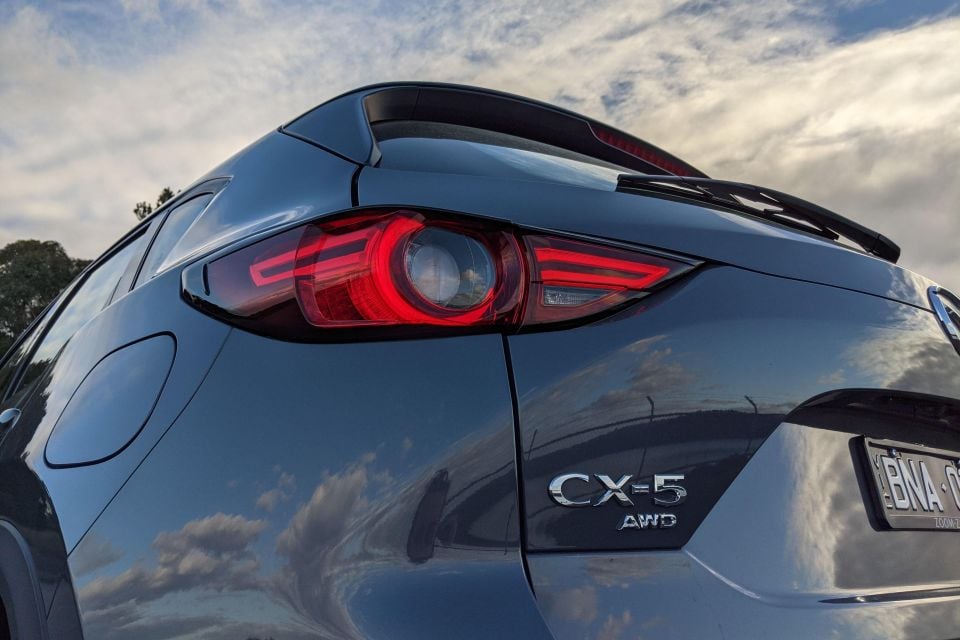
MORE: Everything Mazda CX-5
Where expert car reviews meet expert car buying – CarExpert gives you trusted advice, personalised service and real savings on your next new car.
William Stopford is an automotive journalist with a passion for mainstream cars, automotive history and overseas auto markets.


Josh Nevett
1 Day Ago


Josh Nevett
3 Days Ago
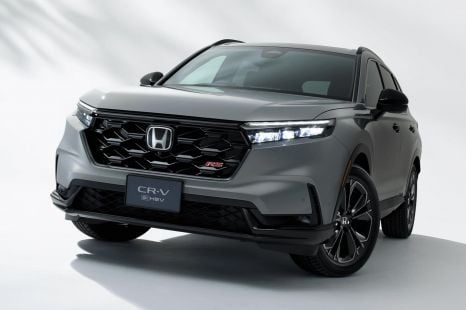

James Wong
5 Days Ago


Derek Fung
5 Days Ago


CarExpert.com.au
8 Days Ago
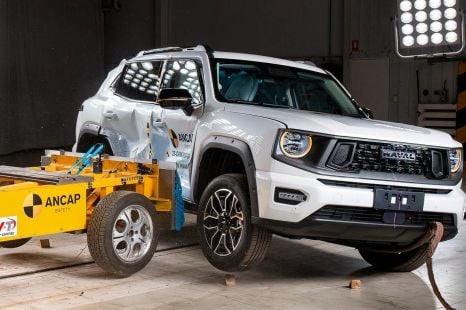

James Wong
8 Days Ago